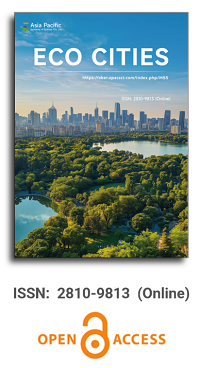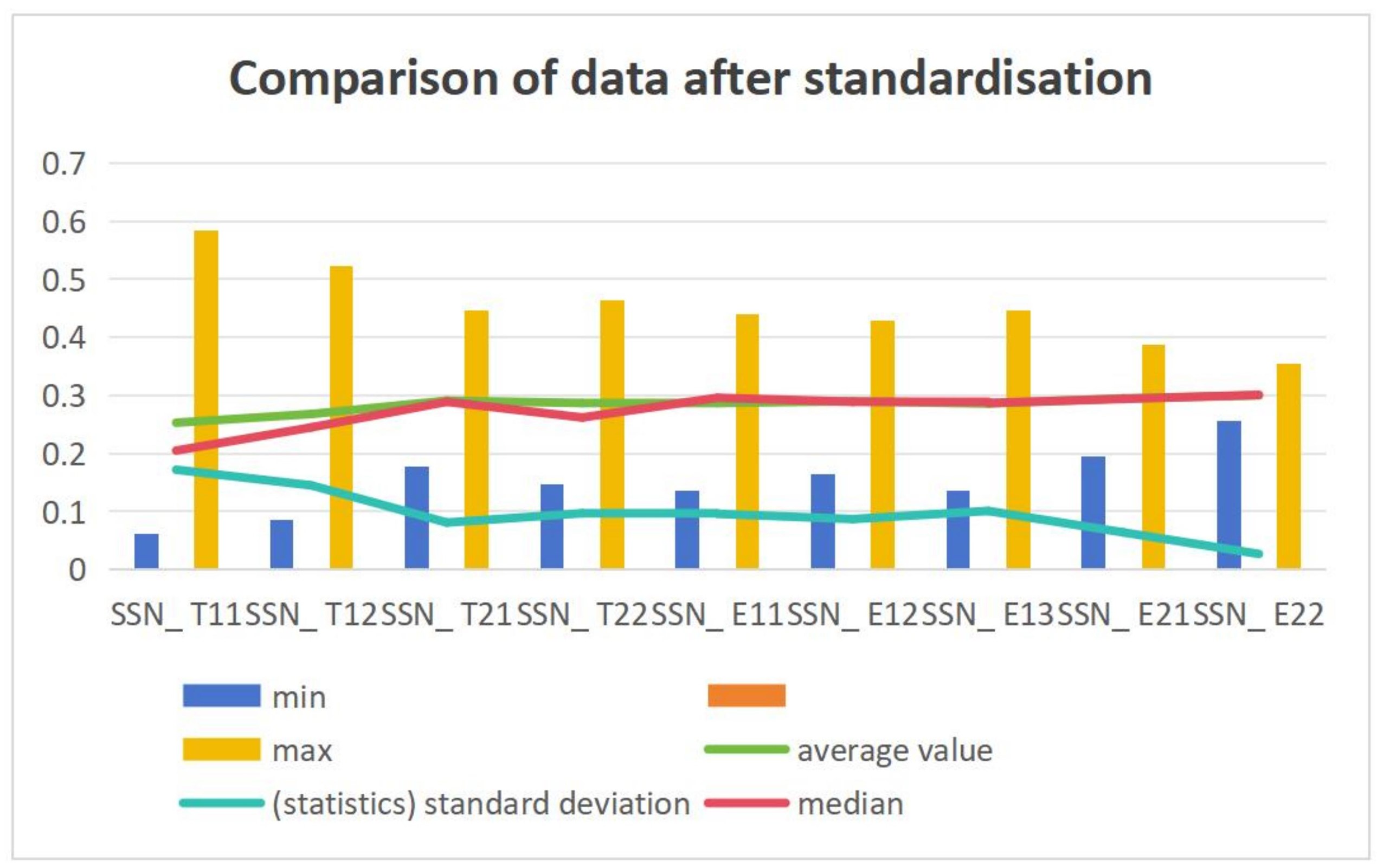


Volume 3, Issue 2 focuses on the evaluation and construction of eco-cities, as well as urban sustainability. Exploring the assessment system of ecological cities and the path of ecological city construction can provide useful recommendations to urban planners and improve city livability levels. Furthermore, this issue highlights the importance of ecology in urban sustainable development and investigates promising urban development models to aid in achieving urban sustainable development.
Issue release: 30 December 2022
Build an evaluation index system for an ecologically livable city, investigate the ecological livable level of Zhuzhou City from the perspective of residents’ satisfaction, study the influencing factors of residents’ satisfaction by using exploratory factor analysis, analysis of variance and correlation analysis, and calculate the ecological livable level of Zhuzhou City and its four main urban areas. The research results show that: (1) The satisfaction evaluation of ecological livability in Zhuzhou City is mainly composed of four-dimensional factors: urban participation, human settlements, urban security, and human settlements economy, and the impact effect shows a decreasing trend. (2) There are significant differences in the satisfaction evaluation of various factors in terms of residents’ age, educational background, and length of residence, and there is a significant negative correlation between residents’ sense of belonging and satisfaction. (3) The overall satisfaction level of ecological livability in Zhuzhou is general. Among the four main urban areas, Lushong District has the highest satisfaction score, and Hetang District has the lowest score. On this basis, put forward targeted policy suggestions to improve the ecological livability of Zhuzhou City.
Issue release: 30 December 2022
Natural and man-made disasters, including terrorism, pose very complex challenges to urban management decision makers at the international level, who must respond correctly without adequate economic and technological resources. Therefore, it is important to consider urban resilience actions as a cohesive factor conducive to appropriate land planning. Starting with the multidisciplinary research of the Autumnal Equinox Technical University and based on the sustainable and emergency urban approach initiative proposed by the Inter-American Development Bank, as a public tool for the urban development of the county, the urban resilience improvement plan of La Concordia County, Ecuador, was formulated. As the main conclusion, this study reveals the importance of urban elasticity in urban development planning and proves the effectiveness of multidisciplinary research in urban development planning and construction.
Issue release: 30 December 2022
Objective: The application of sustainable development in urban planning and development is a key issue in the management and practice of urbanization in academic and professional circles. Although its importance has been recognized separately, there is now a need for an integrated discussion on planning, urban development, and sustainability. The purpose is to clarify their meaning and explore their compatibility space and limitations, which increases knowledge in this field. Methodology: Through the systematic study of specific literature, this paper makes a critical study of the recent cases of the interaction of these terms, focusing on the diversity of their methods and materials. The complexity of achieving sustainable urban planning and development is emphasized and discussed. Result: The results show that people are more and more interested in the research in this field. Cities can be one of the most advantageous areas for addressing ecological issues through strategic, multi-scale, innovative, visionary, and educational planning, derived from participatory processes, assessed by indicators, and agreed upon by stakeholders at all levels. Originality: In order to clarify these mechanisms, suggestions for further research are also put forward.
Issue release: 30 December 2022
Building an ecological city is the main way to implement the “five in one” overall layout and important content to promote the construction of ecological civilization. The establishment of an ecocity evaluation system is particularly necessary for the construction of ecocity. This paper comprehensively combs the research literature on ecocity evaluation, analyzes the relevant literature from three aspects: evaluation method, evaluation dimension, and evaluation index system, and puts forward suggestions on the existing ecocity evaluation methods.
Issue release: 30 December 2022
This paper is the product of the author’s academic research, personal reflection, professional experience, and technical suggestions on the urban evolution of Lima City, Peru, from 1535 to 2020, the urban planning evolution of Lima Callao from 1949 to 2020, and the sustainable development of Lima Callao Megalopolis, Peru, in 2050. From this perspective, the purpose of this paper is to think about the urban evolution of Lima from colonial Lima to big city Lima from 1535 to 2020 and the evolution of Lima Callao urban planning from 1949 to 2020. Similarly, technical proposals were submitted to promote the sustainable urban development planning of Lima Callao Megalopolis to commemorate the 200th anniversary of Peru’s independence (2021), the 500th anniversary of the Lima Spain Foundation (2035), and the second half of the 21st century (2050). Within the framework of the 2030 agenda for sustainable development, the new urban agenda, and the changing national reconstruction plan.
Issue release: 30 December 2022
The purpose of this work is to compare and analyze the two opposite urban development models of compact cities and decentralized cities through five axes and determine which model is most suitable to promote urban coexistence and sustainability. Therefore, this paper makes a literature study on the coexistence and sustainability of cities and the characteristics of the two urban development models of compact cities and decentralized cities. The two models are compared and distinguished through five axes so that they can be compared under the variables of coexistence and sustainability. In the most revealing survey results, it was pointed out that compact cities are the most appropriate urban development model. Therefore, under the principles of compatibility, solidarity, and sustainability, cities are not only a “living space” but also a “space for living together”. The main conclusion is that in order to achieve urban coexistence and sustainability, a relevant urban development model and citizen commitment are needed.

Chinese Academy of Sciences, China
Indexing & Archiving
Asia Pacific Academy of Science Pte. Ltd. (APACSCI) specializes in international journal publishing. APACSCI adopts the open access publishing model and provides an important communication bridge for academic groups whose interest fields include engineering, technology, medicine, computer, mathematics, agriculture and forestry, and environment.


 Open Access
Open Access

.jpg)

.jpg)



